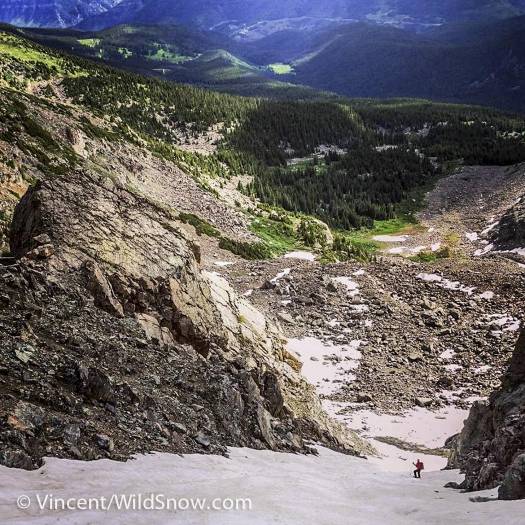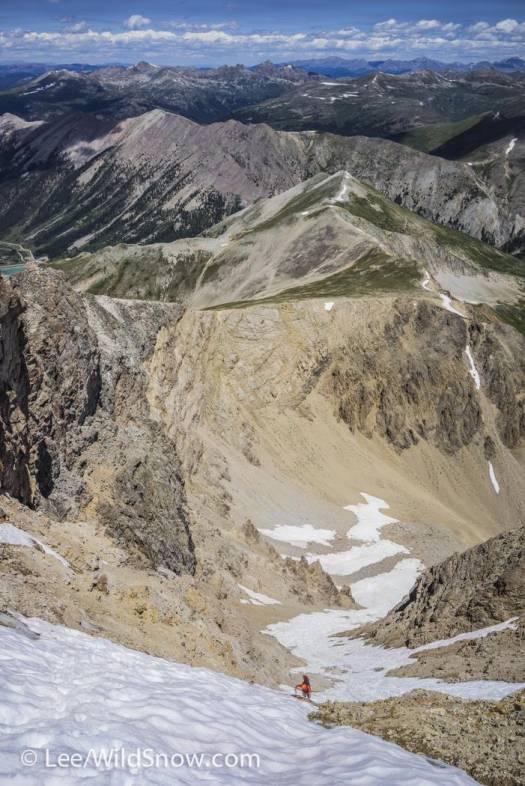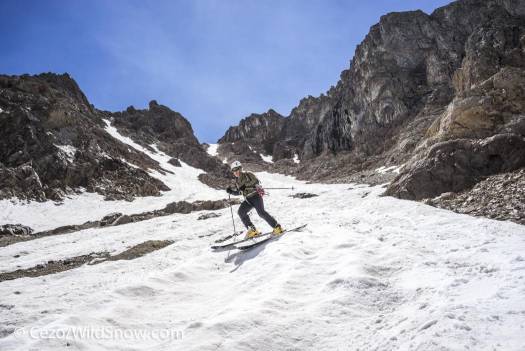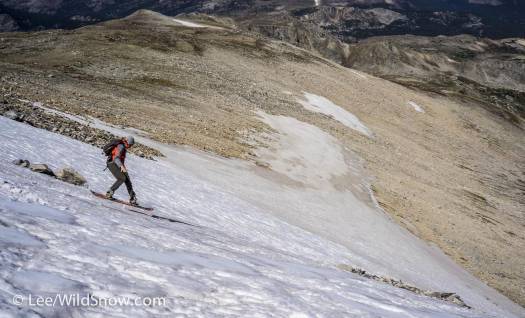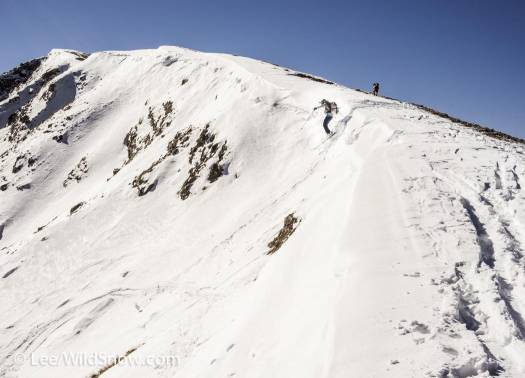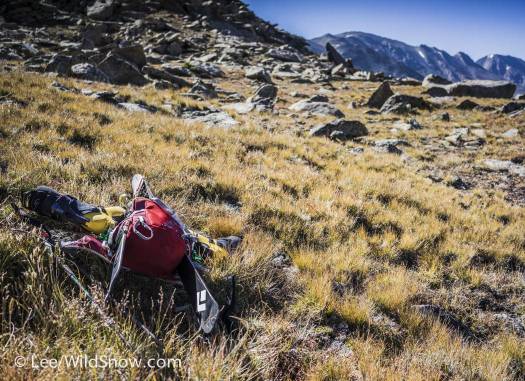
A ski pack might at first feel out of place in the golden tundra grass of summer, but in fact manages many motivational wonders in summer mountain exploration.
The nights are getting colder. Those 14ers have already had a few dustings of white stuff grace their upper flanks. In a month or so here in Colorado, winter will start taking residence up high.
But, without getting ahead of ourselves, there is still time for those last minute summer ski touring turns. Winter, after all, is but a state of mind.
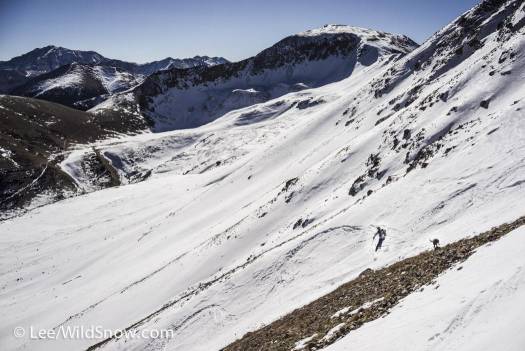 New snow gracing Independence Pass back in October 2014.
New snow gracing Independence Pass back in October 2014.
Summer skiing here in Colorado can be a bit like eating leftovers. It’s exciting at first, yesterday’s pizza only got better, but by September its down to the old pea soup from the back of the freezer. This past month reports from the southern hemisphere have been insane, but one cannot compare a home cooked meal to that fancy restaurant across town. This year I have gotten in some great skiing in far off places, but 12 consecutive months of skiing within 25 miles of my front door is just as fun as any grand adventure and more satisfying than most.
Plenty of people do the year-round backcountry skiing season these days, and though our summer snowfields in the Colorado Rockies are slowly dying, fun can be had all year long with a pair of skis and a bit of gumption.
Here is my almanac for the Colorado endless winter. Plenty of snow has fallen by Thanksgiving, and spring skiing can be at its finest into June, so the ‘tough’ time generally stretches from July through October.
July
Sure the snow looks dirty. Most of those lines on your list aren’t quite in anymore, and your friends are talking about wildflowers and their new running shoes. But July still holds plenty of snow for the skier. Those north facing couloirs hold out for the summer ski mountaineer, and the snowfields of central Colorado might still have a bit of decent corn skiing.
August
There is an aesthetic to midsummer skiing that is similar to eating cake for no particular occasion: it is gratuitous, perhaps not that good for you, you get strange stares from on-lookers, but…why not, it’s delicious. The approaches get long in August, but remember — hiking is fun. You get to ski in shorts with mountain goats. August even might still have a few big lines left tucked in the mountains for those willing to look.
September
It’s not over yet, but if you didn’t have a pair of rock skis in May, you sure do now.
Many year-rounders in Colorado find themselves on St. Mary’s Glacier, Rollins Pass (Skyscraper or Challenger), and other patches of perma-snow in the Indian Peaks and Rocky Mountain National Park. The backcountry ski runs are short, the snow is bad, there are other things to do with your time, but why resist a chance to slide down a patch of frozen something somewhere in the mountains. Remember, there is no such thing as a bad ski day. With the dwindling state of Colorado’s snowfields, it’s best to get those September turns while you still can. Who knows, in another couple of decades water skiing might be the only option.
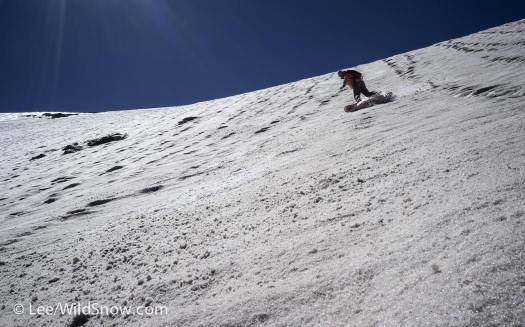
Early summer this snow patch, looming over Leadville, takes on the shape of Africa. By September, everything south of Nigeria has melted out. Interestingly, this snowfield is one of a very few in Colorado to show signs of ‘growth.’
October
At last, late October brings the first dose of new snow to Colorado’s high country. It isn’t much, but it isn’t the brown, rocky ice that usually defines August and September. Plus now you have rock skis. Other people are again scheming ideas for winter recreation. One great part about October skiing in Colorado is that the high mountain passes tend to see snow, but the roads are not yet closed. You can stop pretending that biking is just as fun as skiing. Patch up that jacket that ripped last spring and find your turns.
Wandering in the mountains is a privilege and summer skiing is more about adventure than turns.
If you need ideas there is plenty of great info in Lou’s old guidebooks (out of print but still available, see menu above and search Amazon) and while spotty you can find some gems at BackcountrySkiingCO.com where he is slowly porting over some of his guidebook info. Also, there are some great blog posts in the WildSnow archive (I wrote one earlier this summer on summer skiing in the Holy Cross Wilderness). “Colorado Snow Climbs: A Guide for All Seasons,” by Dave Cooper has some nice route descriptions, and nothing beats the perception of the human eye. If it looks like fun, take the skis for a walk and even if the snow is no good, you can still stumble upon a wonderful day in the mountains.
Dr. Alex Lee lives in Anchorage, Alaska. Alex is a professor at Alaska Pacific University, teaching philosophy and environmental studies. He also works as a sometimes guide, naturalist, writer, and photographer.

